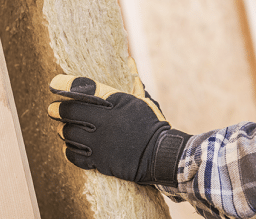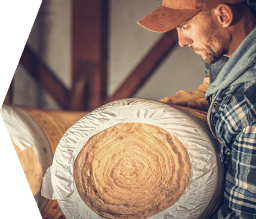Aluminium Foil Products
View the full range here
FREE UK Next Day
Delivery (Order before 1pm)

View the full range here
View the full range here
View the full range here
View the full range here
View the full range here
View the full range here
Need it quickly? We provide a Free Next Working Day UK Delivery as standard on all orders when placed before 1pm.



We are a UK based supplier of high quality Trade and Building Supplies. We carry all items in stock in our UK warehouse so we can provide Free Next Working Day UK Delivery as standard on all orders when placed before 1pm.
We source all of our products from a trusted network of suppliers in the UK and Europe including some of the top brands in the market. We pride ourselves on ensuring only the very best quality products are offered to our customers at some of the guaranteed lowest prices available online.


All of our products are sent on a guaranteed Next Day UK tracked delivery service.

We guarantee that all orders received before 1pm will be despatched from our warehouse the very same working day.

All of our prices are regularly checked against those in the market and we guarantee to offer the most competitive prices available anywhere in store or online.

We accept all major credit and debit cards include PayPal and BACS transfers.
Can I Visit A Local Branch?
We do not have a local branch or offices for you to visit since we wish to offer our customers the most competitive pricing available.
By providing our customers with the buy online option only, we are able to keep our costs low and therefore offer our customers great savings.
You can browse all of our products, services, order online and access your online account any day and time of the week, including bank holidays at www.tradestoreonline.co.uk.
How Can I Place An Order?
Customers can place an order by adding items to their basket and proceeding to the checkout, where you will be asked to provide delivery, card details and or payment information.
Once payment has been received we will send you an order confirmation email for your records.
Accepted Payment Methods
You can pay for your order using Visa and or Mastercard. We also offer PayPal as an accepted payment method.
Why Do I Need To Order Before 1pm?
Completing your online order before 1pm enables our staff time to pick, pack and dispatch your order, so you receive it the next working day.
Do You Offer Discounts?
We pride ourselves on heavily discounted volume pricing on all products we sell which can be ordered online, directly from the website.
For high volume and/or regular orders, we can discuss bespoke pricing according to your company needs, so please contact us to discuss further.
Will I Receive A VAT Invoice For My Order?
Yes, once you have ordered online, you will receive a VAT invoice by email.
Do You Offer A Credit Account?
We do not offer a credit account facility, however all Trade Store products can be purchased online using any major debit or credit card, as well as Paypal and BACS transfers.
You are however, able to create an account online which enables you to view your order history, contact details and delivery details which is handy if you are a trade customer, as you can view your order history and reorder with ease.
Do You Deliver To Anywhere In The UK?
Our couriers can deliver to all destinations within the UK mainland, however please view our Delivery Information page for further guidance, advice and information.
Can I Collect My Order?
We are unable to offer our customers the option to collect orders.
How Will I Be Able To Track My Order?
When your order is ready to ship, you will receive a dispatch confirmation email, which will include tracking information for your order.
You can also expect delivery updates from our couriers.
In the rare event your order is delayed due to courier issues beyond our control, Trade Store will not be held responsible. Therefore we always advise our customers to track their order online using the provided tracking information, this way you can liaise with the courier directly should any delays occur.
What Do I Do If My Item Arrives Damaged?
We advise that you open and check your items before you sign for the delivery and as soon as they arrive. If, on the rare occasion there is a problem with your order, you should contact Trade Store during opening hours, immediately.
The Product I Need To Order Is Out Of Stock
Due to high demand, you may find certain products to be out of stock. However, please rest assured that we do have stock arrive on a daily basis, so your product is unlikely to be out of stock for long.
Please check back with the website for updates.
How Can I Contact You?
The quickest way to contact us is via email. Please send all enquiries to sales@tradestoreonline.co.uk where one of our customer service representatives will get back to you quickly.
What Are Your Most Popular Products?
Popular Categories
Here are our most popular building products:
Aluminium Foil Products
In most cases, aluminium foil membrane is utilised to reduce the amount of insulation required.
In the best cases, the use of aluminium foil membrane could reduce the amount of insulation needed by between 10-20mm (but typically 5-10mm), although this varies with construction type and target U-value.
This type of aluminium foil insulation outperforms standard foil membranes, achieving 0.35 U-value with 89mm stud wall.
Our premium aluminium foil is of equivalent quality, but offers a much more
cost-effective alternative to other aluminium foil / vapour barrier membranes, which are scarcely available to purchase in many builder’s merchants.
Drainage
We supply high quality drainage products for both domestic and commercial use that are competitively priced and can be delivered straight to your door.
Products include line drainage channels, convenient garage packs, soak-away crates and ground reinforcement grids.
Fibreglass Mesh
Our heavy-duty grade reinforced 50m fibreglass mesh rolls are the perfect fit for all plaster and render applications offering performance and durability resistance against cracking, water and alkali.
General Building Supplies
Our broad range of quality, essential building materials, can fully support all building projects and requirements around your home.
Some of our most popular ranges include:
Plastering angle bead
Storage shelving units
Storage wall units
Roofing restraint strap bends
Storage drawer trolleys
Masonry wall starter kits
Masonry cavity closers
Wall ties
Crack stitching kits
Insulation
We stock top-quality Knauf branded insulation products, which offer excellent protection against vapour and heat loss.
These are all BBA certified and comply with all UK building regulations:
Earthwool
DriTherm cavity slabs
Knauf Earthwool loft roll
Outdoor & Gardening
We have a great range of outdoor gardening equipment and materials to enhance your gardening experience.
Some of our most popular products include:
Angle grinders
Pressure washers
Cordless hedge trimmers
Roofing Supplies
You can purchase all the roofing materials you need from us here at Trade Store.
Our range of quality roofing supplies includes:
Universal ventilated dry ridge kit
Roofing lead flashing rolls
Lead-free flashing
Felt support tray eaves protector
Loft Ladders
Torch felt
Brands We Offer
Here at Trade Store Online we supply a wide range of high quality products with top brands including Knauf, Hilka, OptiStep and BPC fixings, at the most competitive prices online, delivered straight to your door with no fuss.
How Do I Return A Product?
If you are looking to return goods to us, please email sales@tradestoreonline.co.uk to discuss your return options.